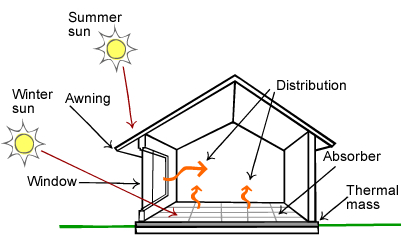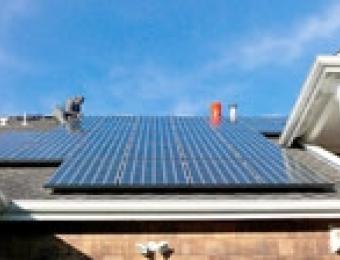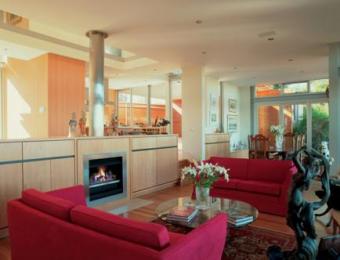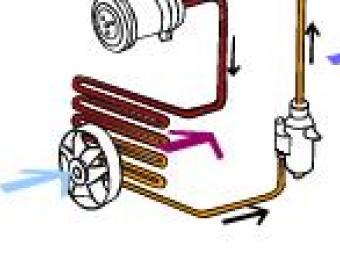Solar energy can be used in all sorts of ways to heat your home. It may be as simple as opening the curtains and letting some sunlight in, but can also include specially designed passive heating systems using a Trombe wall or other elaborate heat capture mechanisms, or even solar powered reverse-cycle air conditioning systems.
Types of solar heating
There are a number of different methods to harness the power of the sun for heating purposes, although none of them are particularly common yet. These include:

- Solar window boxes
- Passive solar heating
- Solar powered reverse cycle airconditioners
- Electric heaters that are run using photovoltaic cells
While it's possibly cheating a little to include electric heaters using photovoltaic cells, they do indirectly rely on solar energy to run. Any measure of efficiency or cost, either in terms of money or CO2 emissions is dependent on where the electricity comes from, meaning it's important to recognise the difference.
How efficient is it?
The answer to this is fairly obvious - the fuel is free, and there are no CO2 emissions, making solar energy by far the most efficient fuel for heating. So why isn't it more popular?
Solar heating isn’t widely used for a couple of reasons. The first is the cost and accessibility. Good passive design is something that needs to be built into the house, and which requires special planning to implement properly. Likewise, other technologies are either in fledgling stages of development, or simply aren't effective enough to be useful in cold climates.
The usefulness of different solar heating options
Perhaps the most commonly used option nowadays is solar power using electricity-producing photovoltaic cells. Thanks to government rebates on solar panels and to the effectiveness of electric heaters, this is currently the most affordable and effective way to use solar energy for heating purposes.
Solar window boxes, while a very interesting option, are normally fairly crudely made and installed, and typically act to reduce your reliance on other methods of heating rather than directly replacing them. They work by filtering the heat produced by the sun directly into your home in one direction and heating rocks, which have a high thermal mass, in another. When the sun sets, the rocks act as the fuel source to keep your home warm into the night.
Trombe walls and other forms of passive heating, on the other hand, trap heat from sunlight in large areas of thermal mass (like concrete, bricks and water). While this is a very effective way of capturing, storing and redistributing heat, it's also something that needs to be carefully designed, and which is reliant on exposure to direct sunlight - as is the case with hooking up flat panel or evacuated tube collectors, like those used with hot water systems, to operate a reverse cycle air conditioner for heating.
|
Advantages
|
Disadvantages
|





